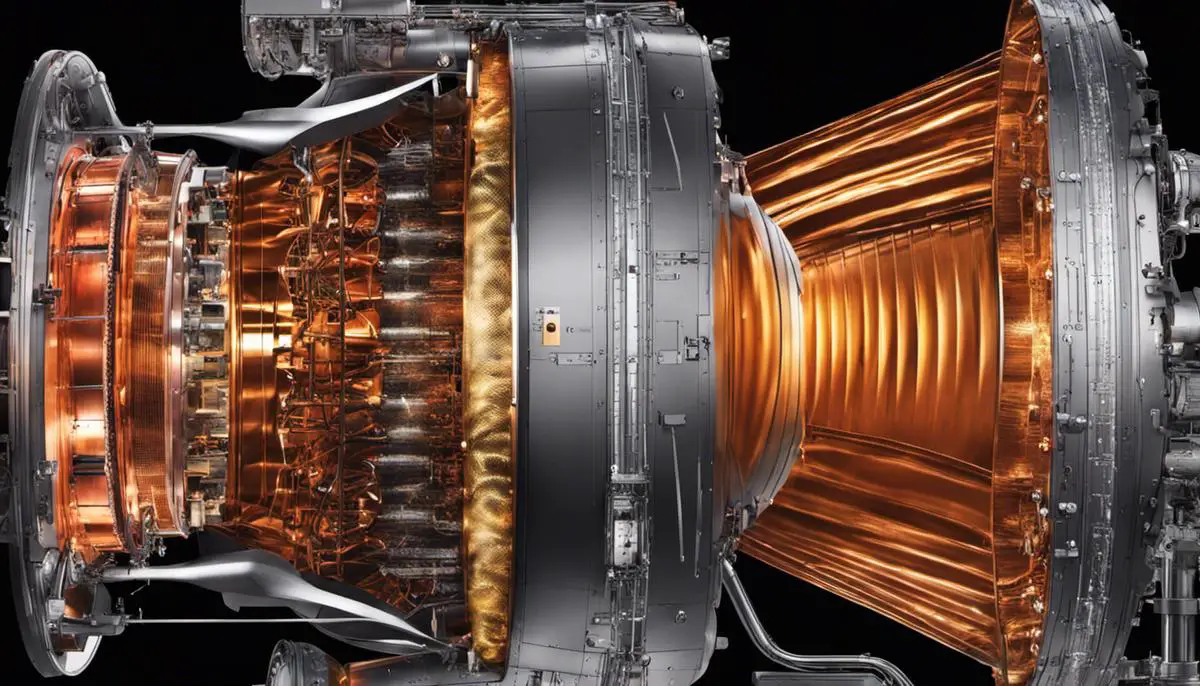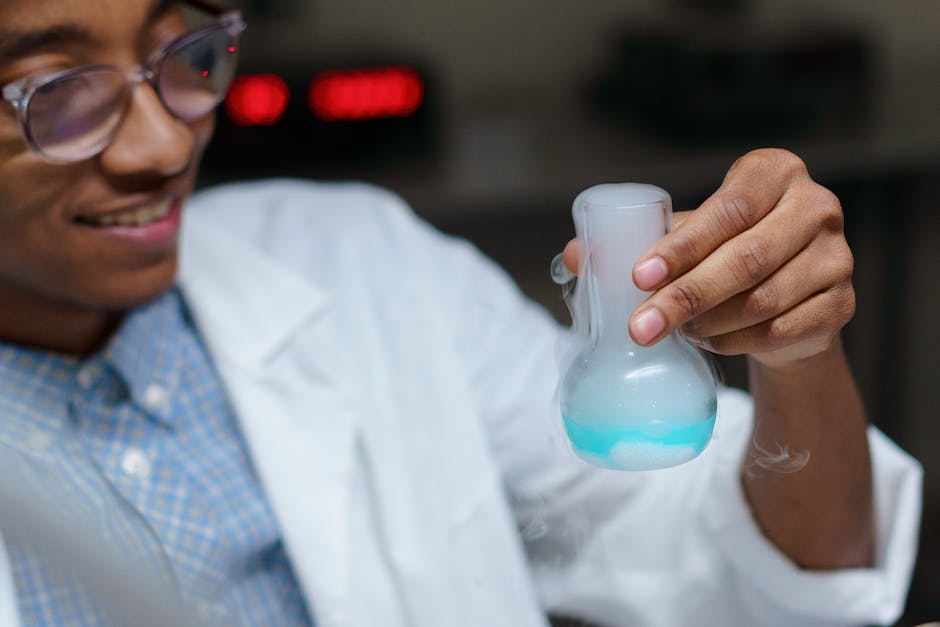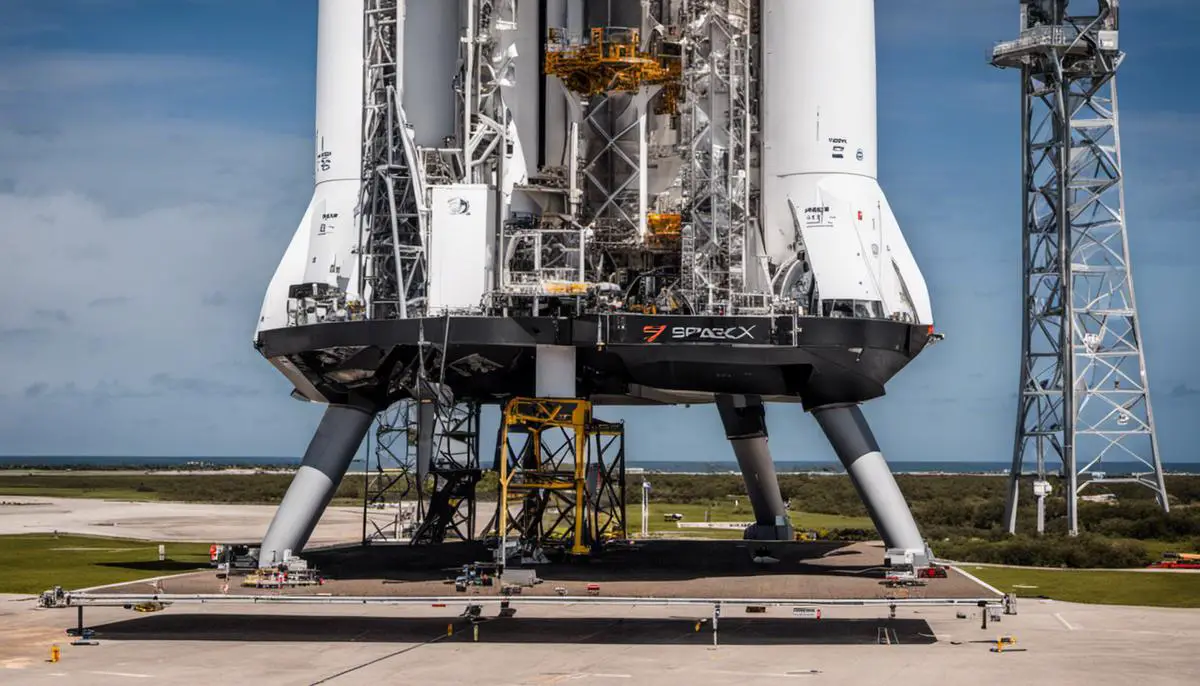The world of space exploration has seen tremendous growth due to private entities like SpaceX. Their robust and forward-thinking strategies have propelled numerous successful projects. However, successful launches and landings depend largely on the maintenance and management of SpaceX’s launch pads. These critical structures endure a range of potential damages – mechanical, thermal, chemical, and environmental. Mechanical damages, resulting from aspects such as lift-off pressure and varying weight loads, can greatly affect the health of these launch pads. Additionally, intense heat from rocket engines can cause serious thermal damages. Chemical damage from rocket propellants is another significant concern. Furthermore, the launch pad’s geographical location, local weather conditions, and even native wildlife can lead to environmental damage. Understanding and counteracting these potential problems is key to SpaceX’s long-term success.
Mechanical Damages on SpaceX Launch Pads
The Influence of Mechanical Strain on Launch Pad Damage: An In-Depth Analysis
The pivotal role of mechanical strain in the initiation and progression of launch pad damage is an inescapably intriguing paradigm in the realm of space exploration technology. A pivotal intersection between material science and engineering, this subject elicits a resonating obsession among space agencies and scholars alike. However, understanding how exactly mechanical strain contributes to launch pad damage mandates an appreciation for the complex interplay between diverse variables.
To begin, a launching vehicle exerts a massive downward force on the launch pad, primarily deriving from the thrust of the engines. This force, inflicted instantaneously at the moment of lift-off, engenders a high mechanical strain on the pad, risking catastrophic physical deformation or fracture. Over time, the cumulative effect of these forces can lead to micro-structure damage, fraying the skeletal integrity of the launch pad.
Complicating matters, environmental factors such as temperature, air pressure, and moisture levels can significantly modify how the pad responds to mechanical strain. Lower temperatures, for instance, tend to make materials more brittle, making them more likely to crack under strain. Similarly, moist environments can promote corrosive metal fatigue, further reducing the launch pad’s ability to cope with mechanical strain.
Beyond direct mechanical impact, another critical factor to consider is the vibrational strain during a rocket launch. The furious energy released during liftoff generates severe vibrational forces that resonate through the launch pad. Vibrations can induce waves of mechanical strain, causing the launch pad structure to fluctuate through cycles of tension and compression. Over time these vibrational strains can initiate or exacerbate fractures in the launch pad, exhibiting degradation and failure.
Exploration of the resultant damage also helps to comprehend this phenomenon. One obvious manifestation is the dreaded spalling—the chipping, splintering, or fraying at the surface of the launch pad exposed to thermal and mechanical trauma. Additionally, the crystalline structure of many construction materials may be affected at a molecular level, leading to structural failures.
Addressing the challenge of launch pad degradation requires innovative engineering solutions, steeped in a deep understanding of the influence of mechanical strain. Researchers currently explore a plethora of strategies. One exciting avenue of research is the use of ‘self-healing’ materials that can autonomously repair micro-damage, while advanced vibration dampening systems aim to lessen the impact of vibrational strain.
Ultimately, the impact of mechanical strain on launch pad damage is a complex and multifaceted topic with profound implications for space technologies. As the tangible gateway to the cosmos, the importance of maintaining resilient launch pad infrastructure cannot be overstated. Elucidating the mechanisms of mechanical strain on launch pad damage underpins efforts to prolong the lifespan of these structures, bolstering our capacity to delve deeper into the mysteries of the universe. This topic, though seemingly niche, represents a cornerstone of humanity’s ceaseless pursuit of space exploration, making it an irresistibly fascinating focal point of contemporary research.

Thermal Damages on SpaceX Launch Pads
Understanding Thermal Phenomena in SpaceX Rocket Engines
As the spectacle of rocket launches continues to captivate and inspire the world, underlying biological principles also command attention. The thermal effects produced by rocket engines, particularly those of SpaceX, present an intriguing realm of physics, thermodynamics, and materials science. A crucial aspect of space exploration involves understanding these phenomena and mitigating their impact on the launch infrastructure.
Understanding the thermodynamic forces experienced during a rocket launch necessitates a focus on the pivotal role of rocket engine combustion. The proprietary Merlin engines used by SpaceX combust a mixture of liquid oxygen and rocket-grade kerosene, named RP-1. This volatile union generates an overwhelming surge of thermal energy, with temperatures rising to an astonishing 5,500 degrees Fahrenheit. These extreme temperatures are met with the chilling reality of the launch pad surface, spawning an abrupt thermal gradient.
This abrupt temperature change from ambient to extreme heat in a very short period leads to thermo-mechanical stress on the launch pad. When a material experiences such severe temperature variations, it expands and contracts rapidly, potentially leading to what is known as thermal fatigue. This process significantly exacerbates the life of the launch pad, causing overt wear and tear that can pose a serious safety risk if not adequately managed.
Moreover, the expulsion of fiery exhaust gases during liftoff creates a dynamic thermal environment around the launch pad which entails a set of complications. The dramatic propelling force from the engine’s scorching exhaust has severe implications for the launch pad. The sudden application of such extreme heat often causes problems associated with thermal shock, potentially causing materials to fracture and fail.
Numerous solutions have been explored for these thermal effects. To combat the effects of thermal shock, materials with high thermal shock resistance, such as thermal barrier coatings (TBCs) and ablative materials, are applied to the launch pads. TBCs act as a buffer, reducing the steep temperature gradient, while ablative materials absorb and disperse the excessive heat, reducing the surface temperature.
The introduction and effective dispersal of cooling fluids, notably water, before and during ignition are systematically implemented as part of launch procedures. One of the most recognized practices in this factor is the Sound Suppression Water System (SSWS), which releases millions of gallons of water onto the launch pad during a launch. This system primarily serves to suppress the sound and shockwaves during a lift off but significantly contributes to decreasing the heat produced.
Recognizing the thermal effects on launch pads is not only integral for preserving essential infrastructure but also carries implications for the safety and success of space explorations. As future missions become more frequent and ambitious, understanding and structuring strategies to confront these challenges will remain integral for enduring progression in the transcendent realm of space exploration. The intricate science behind these rocket launches is as captivating as the launches themselves, underscoring the importance of thermodynamics in shaping space technologies.

Chemical Damages on SpaceX Launch Pads
Chemical Interactions and Their Threat to Launch Pad Integrity
Continuing the discourse on factors that potentially compromise the integrity of launch pads, we shall delve into chemical interactions and scrutinize their destructive impact. Given the pivotal role of launch pads in any successful space mission, it is pivotal that all potential threats are comprehensively understood and effectively addressed.
Rocket propellants, predominantly consisting of complex chemical mixtures, inevitably leave behind a residue when combustion occurs. While these residues may seem innocuous, cumulatively they can profoundly degrade the integrity of launch pads. The process, known as chemical attack, culminates in the corrosion and weakening of the launch pad’s protective coatings and structural material. The prevalence of corrosive agents in rocket exhaust, such as hydrochloric acid produced by solid rocket motors, further amplifies this threat.
The chemically aggressive environment created by exhaust plumes can trigger a range of reactions at the chemical level. Repeated contact with such plumes can lead to the intergranular cracking of the materials that make up the launch pad. These cracks may remain microscopic initially but over time can progress into visible crevices that undermine the structural integrity.
Interaction of rocket exhaust with the ambient atmosphere also presents a multifaceted threat. The fast, hot stream of exhaust gases can chemically react with environmental moisture and create corrosive byproducts. This phenomenon, acid rain, when targeted at launch pads, can accelerate deterioration processes and aggravate preexisting damage.
An ancillary effect of these chemical interactions is the degradation of reflective heat shielding policies. The corrosive residue can chip away at these heat protective layers, causing further vulnerability to thermal effects. This double whammy of corrosion and thermal exposure intensifies strain on the launch pad structure, which, if left unattended, may incite catastrophic failures.
Efficient countermeasures are therefore paramount to preserving launch pad integrity. Bio-resistive coatings, corrosion-resistant alloys, and advanced design strategies that facilitate residue venting offer potential mitigation approaches. Moreover, regular inspections allow for an early detection of corrosion issues, thus facilitating timely intervention.
In conclusion, the complex chemical interactions associated with rocket launches present a substantial risk to launch pad integrity. Thus, a thorough comprehension of these processes and inclusion of preventive strategies in launch pad design and maintenance protocols are of utmost importance for sustained space exploration initiatives. Successful space missions demand not only advanced space vehicles but also resilient infrastructures here on Earth.
Such research into launch pad durability is not merely a question of academic curiosity but an essential tributary in the river of progress, facilitating humanity’s journey into the vast unknown.

Environmental Damages on SpaceX Launch Pads
An additional environmental influence which can inflict detrimental consequences on SpaceX launch pads are meteorological phenomena, including the presence of extreme weather conditions. Due to the location of these facilities, predominantly along coastal regions, multiple varieties of weather systems pose significant threats. For instance, hurricanes, tropical storms, or other severe weather events underscore the risk of catastrophic infrastructure damage. These meteorological giants harbor the potential to execute colossal kinetic energy onto the launch pad, impair surface integrity and can even trigger whole-system malfunction in unintended circumstances.
Winds, in particular, whether cyclonic or prevailing, apply direct pressure to the superstructure of the launch pad. High wind speeds implicate unwarranted stress on pad materials, effecting localized abrasion, erosion, and even potential deformation, thereby compromising the structural integrity. Moreover, wind-propelled projectiles or debris augment the destructive potential towards the crucial structural elements of the pad, potentially culminating in substantial fragmentary damage.
Accompanied by these wind patterns often are intense precipitation events that may result in localized flooding. Persistent water exposure promotes erosive damage via the continuous movement of water, not to mention the pressures exerted by standing water on submerged materials, exacerbating wear and tear on the pad surface. Furthermore, inundation and saturation create conduits for infiltrating water into the subsurface layers, triggering issues related to soil strength and stability – critical factors for enduring the immense loads during launch processes.
Electrical storms pose yet another intricacy, lightning strikes being a paramount concern. A direct strike on launch pad infrastructure is capable of inducing burst damage and even generating transient electrical overloads that might disrupt intricate onboard and pad systems. Initiating an array of protective measures such as installing lightning towers and predicting changes in weather on and around the launch pad to navigate launch windows, inevitably contributes positively to safeguarding against this naturally occurring menace.
SpaceX must also judiciously monitor the environment for heightened levels of particulate matter in the surrounding air. Particulates, such as dust and sea salt, introduced into the system, can inflict extensive damage. Fine particulates can infiltrate the minutest of crevices, causing abrasive wear, while the hygroscopic sea salt owing to its propensity to attract and hold water molecules promotes electrochemical corrosion, causing material breakdown.
Leveraging advanced meteorological studies, coupled with the expertise of engineers, SpaceX strives to envisage and synthetize protective measures against these potent environmental influences onto the launch pad. Vigilance in the systematic inspection and preventative maintenance, especially following a significant climatic event, is crucial to preserve the wear tolerance of the pad structures. Strategies such as selecting durable materials adapted to specific environmental conditions, and implementing designs which consider the extremes of weather, guide the architectural decisions for constructing resilient spaceport platforms.
Such extensive efforts to comprehend and constructively address these adverse environmental factors are testament to the painstaking commitment of achieving not only successful but also sustainable space travel. This signifies that the triumph of space exploration lies just as much in victorious ascendancies into the celestial realm as in preserving the initial stepping stones – the launch pads, combating an array of elemental onslaughts here on Earth.

Through this comprehensive exploration, we gain a robust understanding of the challenges faced by SpaceX’s launch pads and the protective measures in place. Uncovering the realities of mechanical, thermal, chemical, and environmental damages offers valuable insights into SpaceX’s strategies for safeguarding these vital structures. From handling the power of launch pressure and the intense heat of rocket engines, to managing chemical interactions and the unpredictable nature of the environment, SpaceX must navigate an array of complexities. Yet, each challenge faced is a test of SpaceX’s capacity for innovation and its commitment to expanding our reach in space. As we push forward, bearing witness to an era of impressive technological breakthroughs, the resilience of SpaceX’s launch pads remains a testament to our unwavering determination to conquer new frontiers.
![]()
